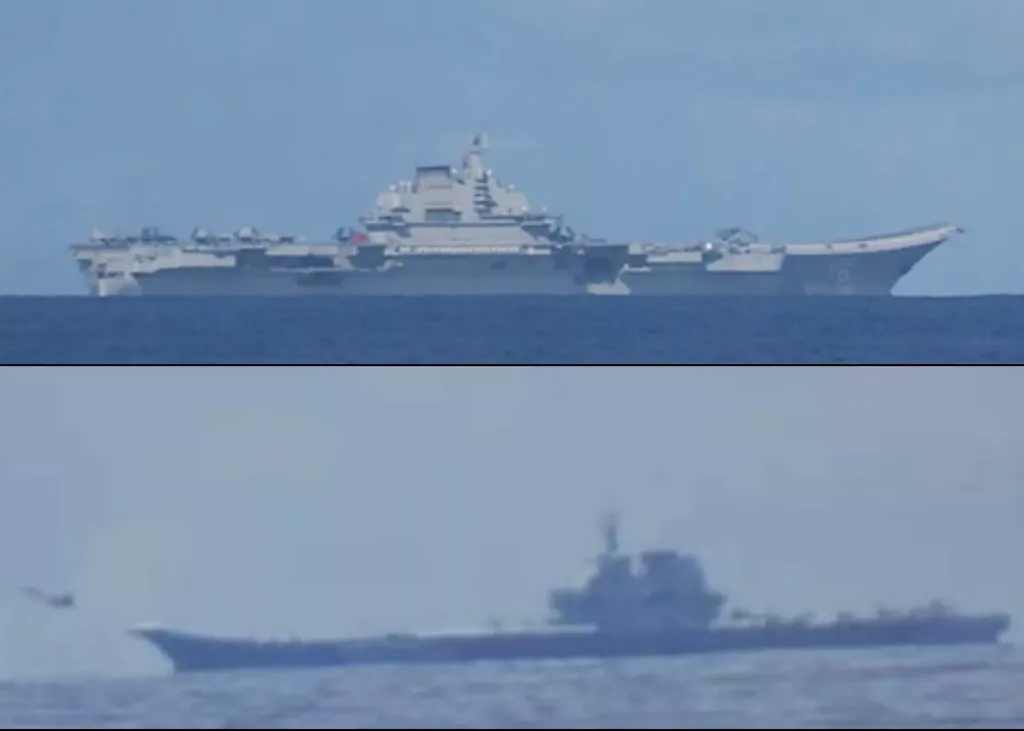A pair of Chinese aircraft carriers are continuing operations in the broader western Pacific near United States allies as part of efforts to expand Beijing's naval presence in the region.
Newsweek has contacted the Chinese Defense and Foreign Ministries for comment by email.
While China flexes its naval power through a rare dual aircraft carrier deployment, the U.S. maintains only one aircraft carrier -- USS George Washington -- in the western Pacific, after USS Nimitz was redeployed to the Middle East as tensions rise amid the Iran-Israel conflict.
Japan's Defense Ministry issued an update with a map on Tuesday regarding China's carrier deployment. As of Monday, the Liaoning and the Shandong remained in the Philippine Sea, each leading a naval task group and transiting toward the Philippines.
Between June 8 and Monday, June 16, the two vessels conducted a total of 290 and 230 aircraft takeoffs and landings, respectively, involving their fighter jets and helicopters. Both aircraft carriers were monitored by three Japanese warships, according to the update.
The map provided by ministry suggests that the aircraft carriers did not sail in formation while underway in the Philippine Sea. They were observed operating together during their first dual operation in the South China Sea last October.
While the warships remained outside Japan's territorial waters -- which extend up to 13.8 miles from the coastline -- they were tracked transiting within Japan's 230-mile-wide Exclusive Economic Zone (EEZ) during segments of their voyages.
The Liaoning became the first Chinese aircraft carrier to operate on the eastern side of the Second Island Chain -- a defensive line centered on Guam that stretches from Japan to New Guinea in the south -- when it was spotted within Minamitorishima's EEZ, Japan's easternmost territory.
The Shandong was tracked operating within Japan's EEZ near the country's southernmost territory, Okinotorishima, which is located between the First and Second Island Chains.
During the Shandong’s deployment, fighter jets launched from the carrier intercepted a Japanese patrol aircraft at close range, which Tokyo claimed could have led to a collision.
China’s Defense Ministry said last week that both aircraft carriers conducted what it called “routine training” in the western Pacific. It remains unclear whether they are returning home as they approach the Luzon Strait, which lies between Taiwan and the Philippines.
Jiang Bin, a spokesperson for the Chinese Defense Ministry, said on June 13: "China's carrier training was conducted in international waters, was not directed at any specific country or target, and fully complied with international law and international practice. In response to Japanese ships and aircraft forcibly entering China's training area, China's actions were lawful, professional, and restrained throughout the process."
Alex Luck, an Australia-based naval analyst, said in a post on X (formerly Twitter) on Tuesday: "No photo ops but they [Chinese aircraft carriers] clearly interacted [in my opinion]. What kind of interactive training (cooperative, adversary) is speculative, but the dynamics may suggest some sort of adversary training was at least part of it."
It remains to be seen whether the Chinese military will disclose further details about its second dual aircraft carrier operation.
